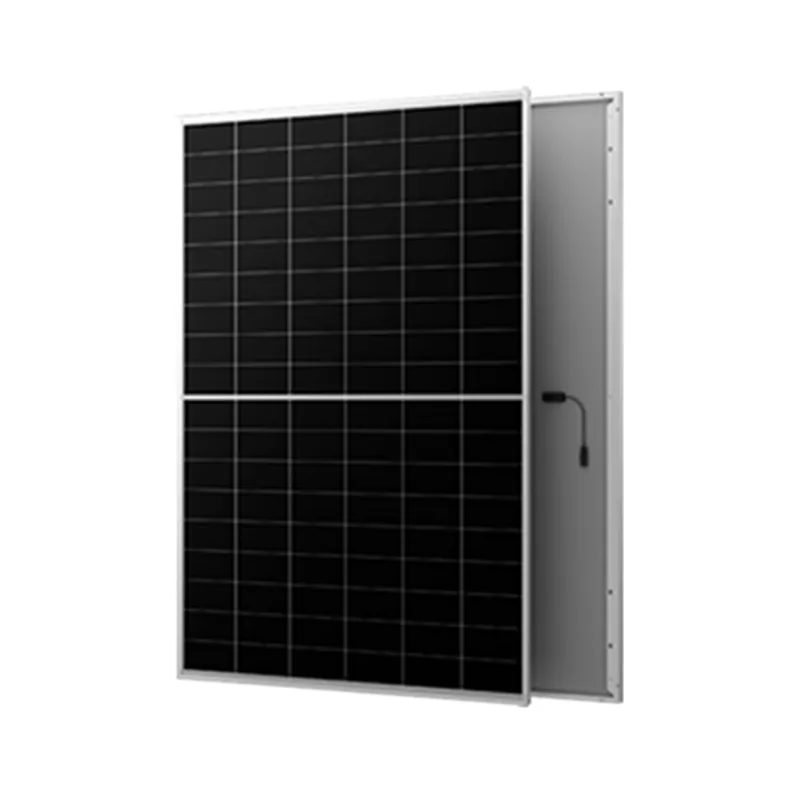3 月 . 07, 2025 06:40
Back to list
JA 610-635W N-Type Bifacial Double Glass Mono Module Solar Panel
Mono bifacial solar panels, the innovative leap towards more efficient and sustainable energy solutions, have gained substantial traction in the renewable energy sector. As the world steers towards greener alternatives, understanding the dynamics and advantages of mono bifacial panels becomes paramount. These panels, characterized by their ability to capture sunlight from both sides, merge the high efficiencies of monocrystalline technology with the advanced design of bifacial modules, offering a unique proposition for both commercial and residential installations.
Trust within the consumer base is bolstered by rigorous testing and quality assurance standards that these panels undergo. Accredited laboratories and field tests confirm their ability to withstand harsh environmental conditions, including high winds and heavy snowfall. This reliability factor enhances consumer confidence, making mono bifacial solar panels a trustworthy choice for anyone looking to invest in renewable energy. From a product perspective, the ongoing innovations in mono bifacial technology continue to address and overcome existing limitations. Manufacturers are now exploring the use of PERC (Passivated Emitter and Rear Cell) technologies and half-cell designs within bifacial modules to further elevate efficiency rates and reduce shading losses. Additionally, advancements in anti-reflective coatings and glass texturing are being employed to maximize light absorption and minimize operational wear and tear. As we look towards a future increasingly powered by clean energy solutions, mono bifacial solar panels represent not just a technological advancement but a beacon of sustainable innovation. Their increasing adoption across global markets signifies a pivotal shift in how energy can be harvested and utilized more efficiently. Business owners, homeowners, and energy providers who choose to transition to mono bifacial technologies are not merely embracing a product but are aligning with a progressive movement geared towards a sustainable tomorrow. In conclusion, leveraging the transformative capabilities of mono bifacial solar panels can significantly alter the landscape of solar energy utilization. Their combination of high efficiency, enhanced energy yield, and robust performance in diverse environments makes them an ideal choice for sustainable energy infrastructures. As experts continue to innovate and refine these systems, the promise of cleaner, more efficient energy becomes increasingly attainable, paving the way for a more responsible energy consumption paradigm.


Trust within the consumer base is bolstered by rigorous testing and quality assurance standards that these panels undergo. Accredited laboratories and field tests confirm their ability to withstand harsh environmental conditions, including high winds and heavy snowfall. This reliability factor enhances consumer confidence, making mono bifacial solar panels a trustworthy choice for anyone looking to invest in renewable energy. From a product perspective, the ongoing innovations in mono bifacial technology continue to address and overcome existing limitations. Manufacturers are now exploring the use of PERC (Passivated Emitter and Rear Cell) technologies and half-cell designs within bifacial modules to further elevate efficiency rates and reduce shading losses. Additionally, advancements in anti-reflective coatings and glass texturing are being employed to maximize light absorption and minimize operational wear and tear. As we look towards a future increasingly powered by clean energy solutions, mono bifacial solar panels represent not just a technological advancement but a beacon of sustainable innovation. Their increasing adoption across global markets signifies a pivotal shift in how energy can be harvested and utilized more efficiently. Business owners, homeowners, and energy providers who choose to transition to mono bifacial technologies are not merely embracing a product but are aligning with a progressive movement geared towards a sustainable tomorrow. In conclusion, leveraging the transformative capabilities of mono bifacial solar panels can significantly alter the landscape of solar energy utilization. Their combination of high efficiency, enhanced energy yield, and robust performance in diverse environments makes them an ideal choice for sustainable energy infrastructures. As experts continue to innovate and refine these systems, the promise of cleaner, more efficient energy becomes increasingly attainable, paving the way for a more responsible energy consumption paradigm.
Latest news
-
Unleashing the Power of Solar InvertersNewsOct.23,2024
-
The Advantages of String Solar InvertersNewsOct.23,2024
-
Revolutionizing Energy: Your Guide to Solar InvertersNewsOct.23,2024
-
Harnessing the Sun: The Essential Guide to Solar InvertersNewsOct.23,2024
-
Harness the Power of the Sun: Your Guide to On-Grid Solar InvertersNewsOct.23,2024
-
A Comprehensive Guide to Off-Grid Solar InvertersNewsOct.23,2024
Related PRODUCTS







